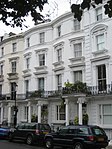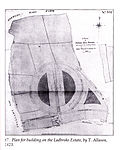Elgin, Ladbroke Grove
Grade II listed buildings in the Royal Borough of Kensington and ChelseaGrade II listed pubs in LondonLondon building and structure stubsNational Inventory PubsPub stubs ... and 2 more
Pubs in the Royal Borough of Kensington and ChelseaUnited Kingdom listed building stubs

The Elgin is a Grade II listed public house at 96 Ladbroke Grove, London.It is on the Campaign for Real Ale's National Inventory of Historic Pub Interiors.It was built in the mid-19th century, and the architect is not known.The Elgin was a mod venue in the 1960s and a punk rock one in the 1970s. In May 1975 The 101ers were offered a weekly residency there which led to a nine-month stay.Notable regular patrons have included the serial killer John Christie and Joe Strummer of The Clash.
Excerpt from the Wikipedia article Elgin, Ladbroke Grove (License: CC BY-SA 3.0, Authors, Images).Elgin, Ladbroke Grove
Ladbroke Grove, London North Kensington (Royal Borough of Kensington and Chelsea)
Geographical coordinates (GPS) Address Phone number Website External links Nearby Places Show on map
Geographical coordinates (GPS)
| Latitude | Longitude |
|---|---|
| N 51.516111111111 ° | E -0.20888888888889 ° |
Address
The Elgin
Ladbroke Grove 96
W11 1PY London, North Kensington (Royal Borough of Kensington and Chelsea)
England, United Kingdom
Open on Google Maps









